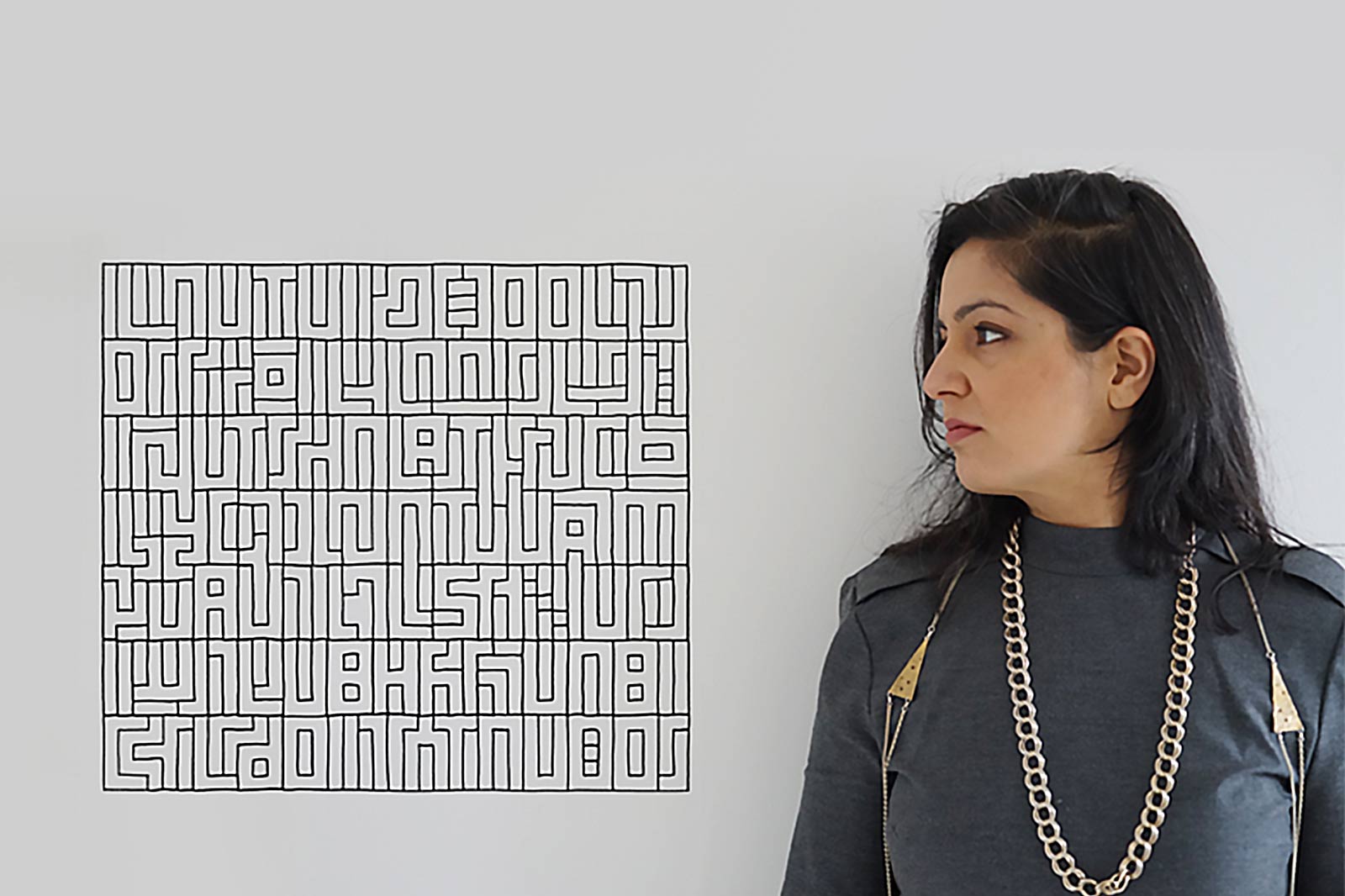Your Cart is Empty
100+ ARTISTS | 1,000+ ARTWORKS | KULTURE SHOP IS NOW CLOSED

Meera: I migrated to Canada when I was just over two years old. I have lived in Toronto most of my life, however, have spent several periods of 2-3 months at a time back in Delhi nearly each year since. I understand this journeying, of going back and forth repeatedly, as one that has really shaped my work. The somatic experiences – of alternating between extreme cold to extreme heat, from relative quiet to constant noise, from an environment made up of muted tones to one full of rich colour, from the smell of processed cheese sandwiches on white bread and Jo Louis to hot halwah while the first monsoon downpour mingles with the dry clay earth – gave me a strong felt sense of difference.
These shifts were compounded by the racism with which I was mostly received in school in Canada, to the pedestal I was given as a “foreigner” when in India. These experiences and others left with a strong sense of belonging or unbelonging in both places, Toronto and Delhi. My work, both as a graphic designer and now as an artist, has been a way for me to heal my fragmented identities and create a “third space” that is my own.

Meera Sethi at her Studio | Her first ever self-portrait
Meera: I’ve long considered my entire life to be a fine balance between the East and the West, and between all sorts of other opposing energies. The work I make imagines a life where all oppositions exist in harmony with each other.

Meera's portfolio projects "Foreign Returned" and "Firangi Rang Birangi"
Meera: In the Autumn of 2013, I created my first large-scale, outdoor, public mural. Titled “Intersections”, it is a celebration of queer South Asian activism and communities in Toronto. The mural wasn’t created in response to Sec. 377 but became a visual focus point for the Toronto protests against Sec. 377. Having my mural as the backdrop to this protest was an unexpected event and a real highlight of the experience for me. It brought my worlds together.

Meera’s mural in Toronto titled "Intersections"
The mural was created to honor LGBTQ South Asian community events in Toronto. From the very early days of Besharam parties on a tiny dancefloor on the top of a restaurant to the larger Funkasia and now Brown/OUT stages during Pride, I have found my place in the gay village through these experiences. It is from this place – one of celebration, activism and community – that I have created the mural. I wanted to give a very strong visual voice to our LGBTQ histories in Toronto. It is a gesture of taking up space and inviting others into those histories (and present struggles). As an abstract work, there are no literal references to community and cultural organizations such as ASAAP, Salaam, Dost, Funkasia, Besharam, Desh Pardesh, and others. There is however a gesture to the spirit of their work and diversity of identities, politics, and histories of the communities that make up these organizations, represented by the various bands of colour intersecting from divergent angles, much like woven fabric.
Meera: Art can reach into the depths of human experience and express this in a way that draws in rather than alienates. It’s open-ended and can engage people on an emotional, intellectual and spiritual level. I think that’s where it’s power lies and it’s potential for change.
Meera: My yearly visits to India. It’s far from a little thing though – it’s hugely inspiring. I also look at interior design, textiles, graphic design and various other arts and crafts regularly to stay inspired, particularly on the level of colour.

Posters by Meera for Social Causes
Meera: The more I make art, the easier it gets. As an artist, I’m learning to trust my intuition and spirit more. It helps guide my work and allows me to be less controlled about the process. Even when I approach design now, I like to work with clients who trust my vision and allow space for that.

Meera’s Artist Series
Meera: Art, design, craft, fashion in India is certainly undergoing what I see as a contemporary revival. There is so much cross-pollination between these fields that it’s a really exciting time to engage. Kulture Shop is at the forefront of investing in young Indian graphic designers. Kulture Shop provides a platform for them to develop their work and engage with a wide audience. It’s what I love most about Kulture Shop.

World Fusion Tees and Art Prints from the Katalyst Music Collection
Being asked to collaborate with Karsh has been a great privilege. I’ve been listening to his music for over around 20 years. It showed up in my life at an important time – when I was seeking culture and community that understood my hybrid identity. Karsh’s music is a beautiful layering of tradition, modernity, and nature. It is alive, fresh and colourful, all elements important in my own work. He is a musical traveler who seamlessly draws in the strength of the table and the oscillations of the turntable. The two become one.